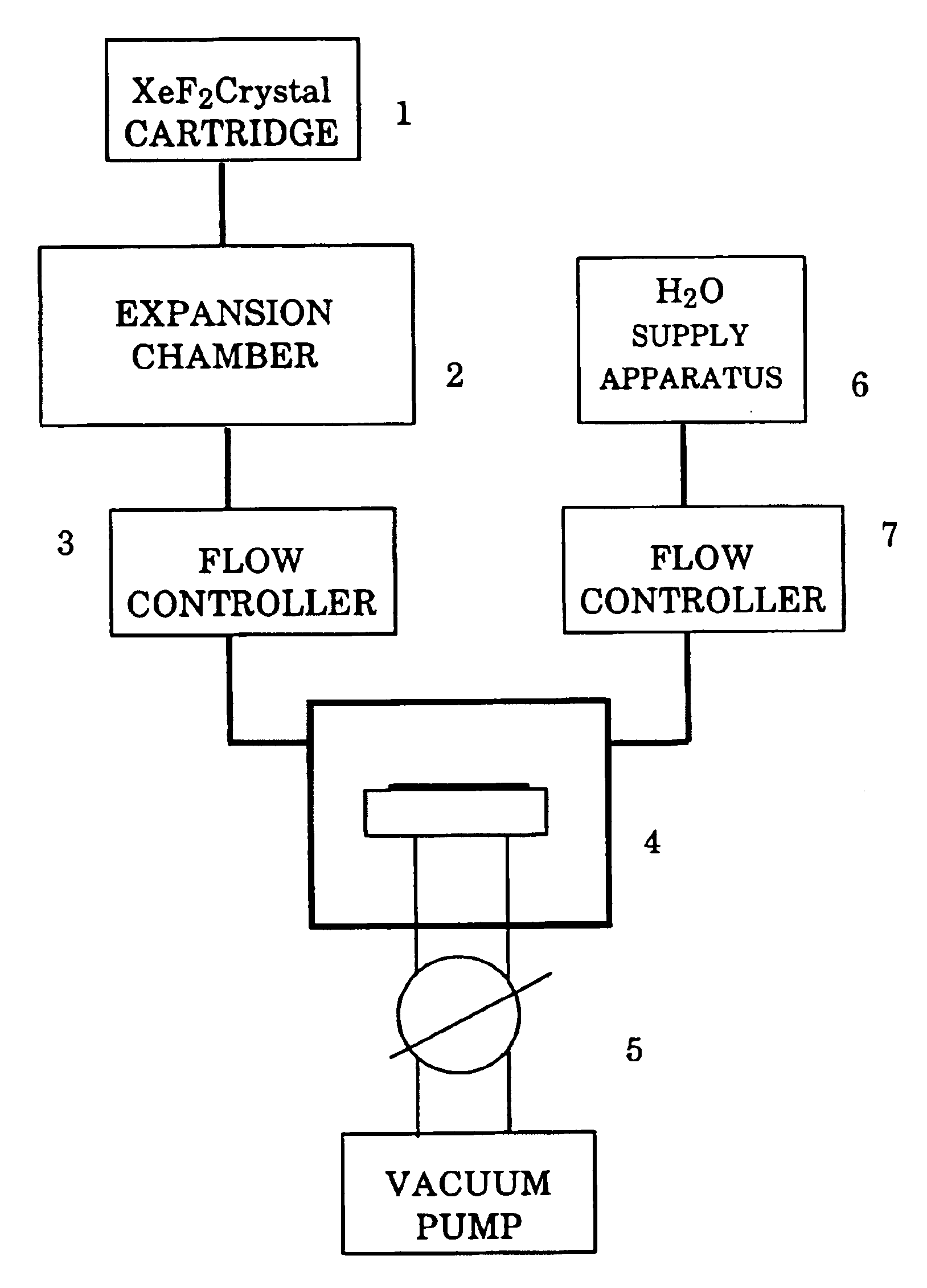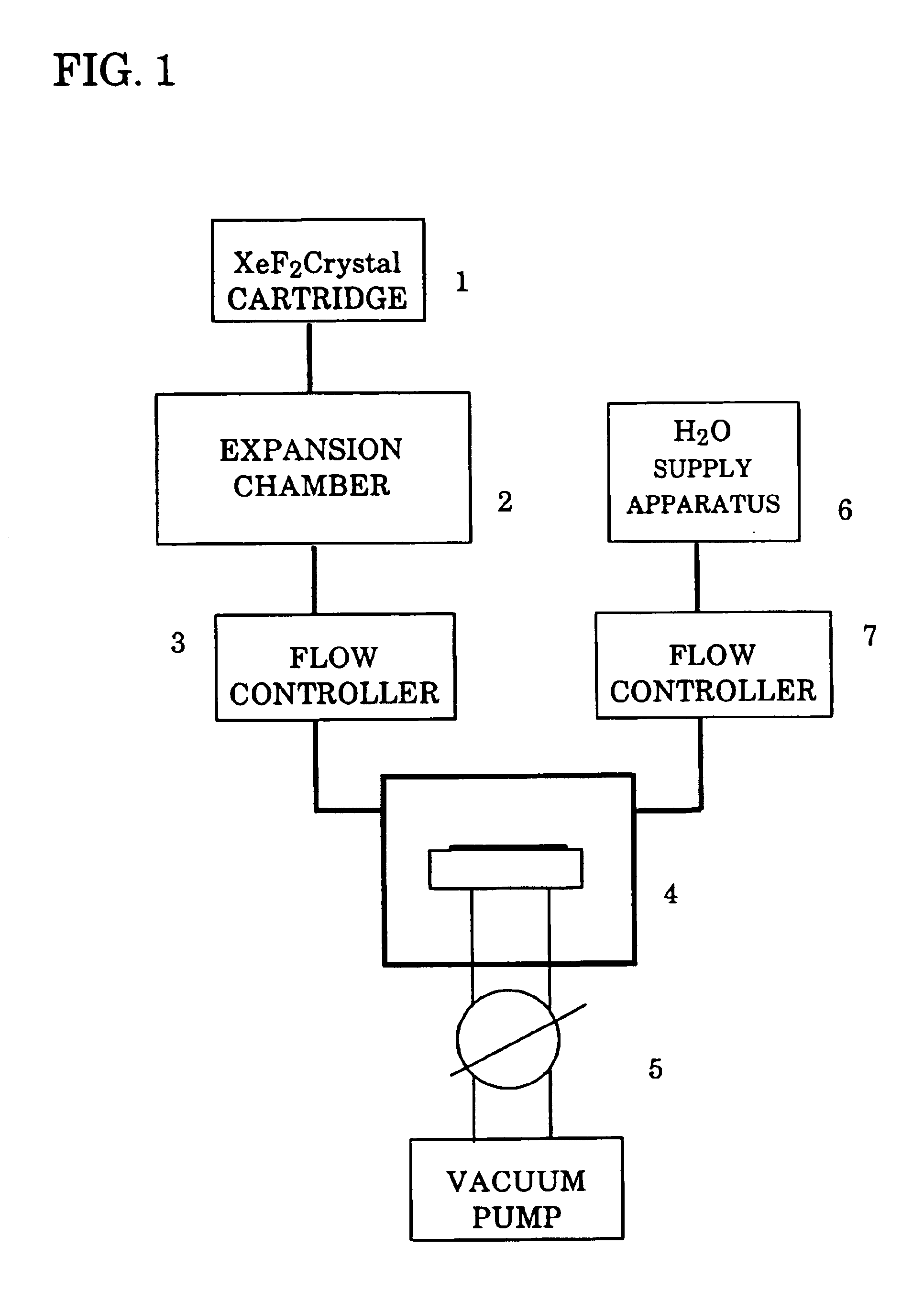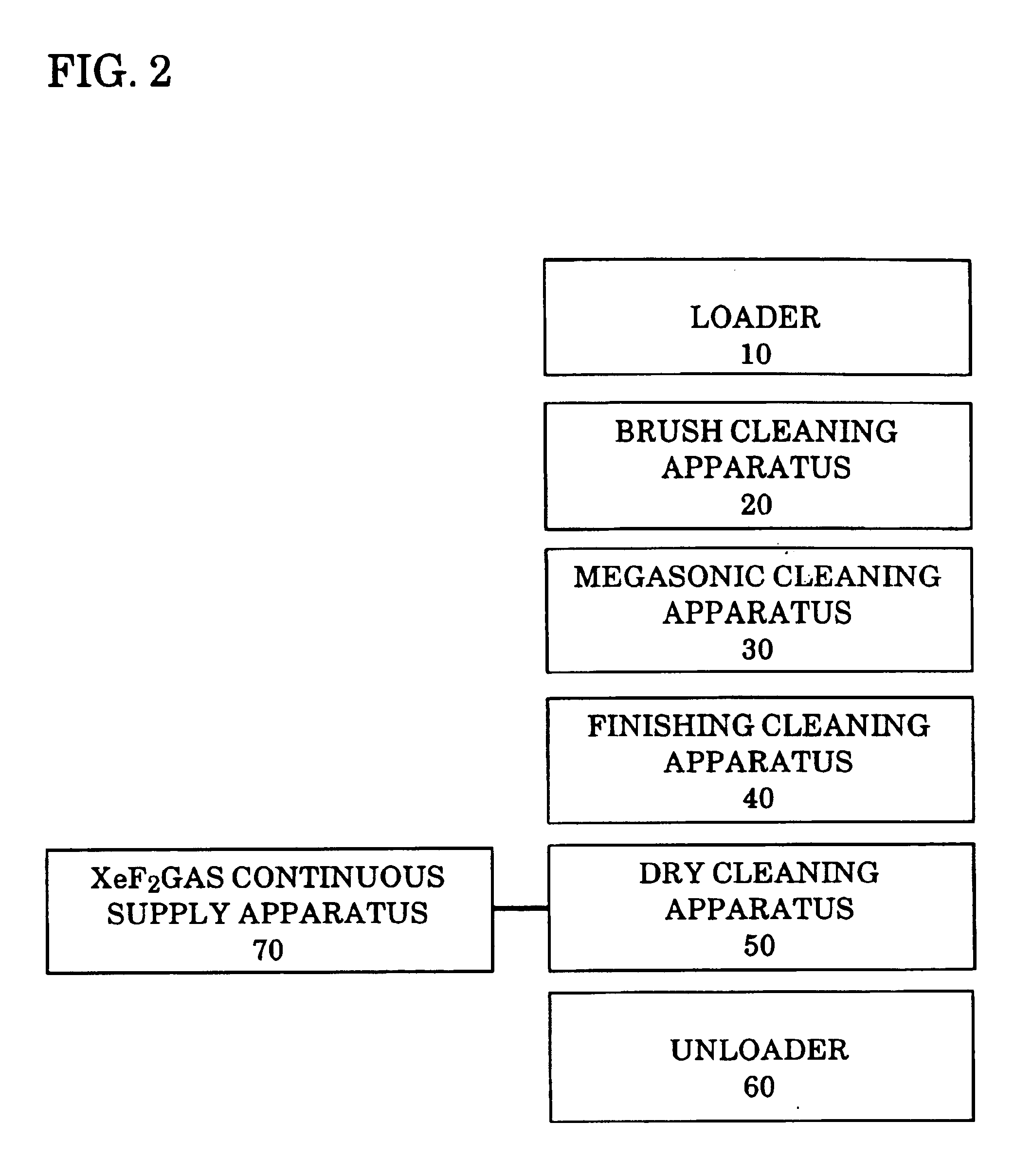Cleaning and etching methods and their apparatuses
a technology of cleaning and etching, applied in the direction of cleaning using liquids, separation processes, instruments, etc., can solve the problems of difficult to remove the above-mentioned oil films, difficult to avoid the attachment of extremely minute silicon dust, and difficult to remove extremely minute silicon pieces, etc., to achieve the effect of difficult removal
- Summary
- Abstract
- Description
- Claims
- Application Information
AI Technical Summary
Benefits of technology
Problems solved by technology
Method used
Image
Examples
example 1
[0036]An XeF2 gas continuous supply apparatus was connected to a chamber of a publicly-known device manufacturing apparatus as shown in FIG. 1. Specifically, the continuous supply apparatus was constituted by connecting an XeF2 crystal cartridge 1 to an expansion chamber 2, and then connecting via a flow controller 3 to a pre-existing gas supply pipe leading to a process chamber 4.
[0037]In addition to a process gas supply pipe, not shown in the drawing, a vacuum pump apparatus 5 was connected to the process chamber 4, whereby the atmosphere in the chamber 4 could be controlled as desired. Consequently, it becomes possible to accurately control the flow rate of the XeF2 gas introduced into the process chamber 4, and moreover it becomes possible to control the gas flow rate and the process chamber 4 pressure independently of one another.
[0038]The inside of the process chamber 4 is evacuated from an air atmosphere to a vacuum, with a required amount of residual water being left behind ...
example 2
[0044]Using a process chamber having an XeF2 gas continuous supply apparatus as used in Example 1, etching of monocrystalline silicon wafers for devices was carried out. Note that, although not shown in the drawing, in the example of the apparatus in FIG. 1, the XeF2 gas supply port was disposed close to a stage on which the silicon wafer was placed, and a constitution preferable for an etching apparatus was adopted such that the XeF2 gas would flow uniformly over the wafer surface.
[0045]Here, 3 μm-deep pattern formation with 100 mm spacing was carried out on a 4-inch wafer. The XeF2 etching process conditions were XeF2 gas, 15 sccm, and a pressure of 20 Pa (150 mTorr).
[0046]Evacuation was carried out to create a prescribed atmosphere, and before commencing the etching, H2O was added for 5 seconds at a flow rate of 50 sccm from a separate gas introduction port without carrying out exhaustion, thus introducing water vapor into the process chamber. Then, the XeF2 gas was introduced in...
example 3
[0051]As shown in FIG. 2, a wafer carrier automatic cleaning apparatus according to the present invention has a constitution in which a loader 10, a brush cleaning apparatus 20, an ultrasonic cleaning apparatus 30, a finishing cleaning apparatus 40, a dry cleaning apparatus 50, and an unloader 60 are arranged in tandem.
[0052]A wafer carrier to be cleaned is conveyed into the cleaning apparatuses by the loader 10. The wafer carrier that has been conveyed in is then carried to the brush cleaning apparatus 20 by a robot. The brush cleaning apparatus 20 has a cleaning bath and a cleaning robot attached thereto. A cleaning liquid comprising, for example, a mixture of pure water and a neutral detergent is introduced in from a bottom part of the cleaning bath and overflows, whereby the liquid level is kept constant. The constitution is such that a rotating table is provided in the bottom part of the cleaning bath, and the carrier to be cleaned is supported in the bath in a state immersed i...
PUM
| Property | Measurement | Unit |
|---|---|---|
| pressure | aaaaa | aaaaa |
| pressure | aaaaa | aaaaa |
| time | aaaaa | aaaaa |
Abstract
Description
Claims
Application Information
 Login to View More
Login to View More - R&D
- Intellectual Property
- Life Sciences
- Materials
- Tech Scout
- Unparalleled Data Quality
- Higher Quality Content
- 60% Fewer Hallucinations
Browse by: Latest US Patents, China's latest patents, Technical Efficacy Thesaurus, Application Domain, Technology Topic, Popular Technical Reports.
© 2025 PatSnap. All rights reserved.Legal|Privacy policy|Modern Slavery Act Transparency Statement|Sitemap|About US| Contact US: help@patsnap.com



